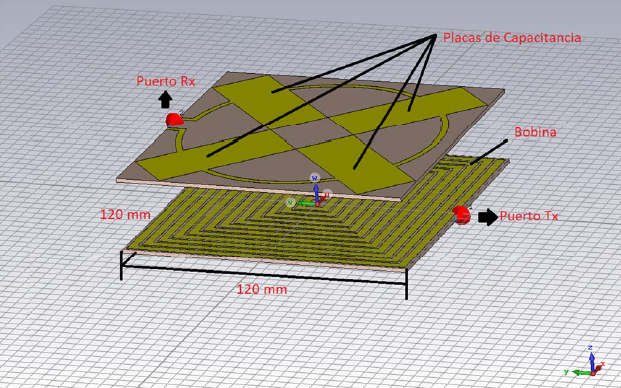Implement a wireless electric energy transmission system through the magnetic resonant coupling of the near field for low-power consumption devices
Main Article Content
Abstract
This paper proposes an alternative wireless power supply method for low-power consumption devices. For the design of the antennas responsible for the transmission of energy, microstrip lines were used on an FR4 substrate (Flame Retardant 4) based on mathematical methods tested from other research contributions. Therefore, integrated circuits with MMIC (Monolithic Microwave Integrated Circuits) technology are included for generating radio-frequency as an energy source from 16 MHz to 23 MHz. In the reception phase, a three-stage doubling voltage circuit is required to rectify and amplify the transmitted signal. The results of the implementation of the system indicate an efficiency between 20% and 30% for transmission distances up to 90 millimeters without obstacles. The performance decreases between 0% and 6.67% when crossing materials such as agglomerate, plastic, glass, expanded polystyrene, fabric, and wood. However, it loses performance with metal.
Downloads
Article Details
Section

This work is licensed under a Creative Commons Attribution 4.0 International License.
Authors who publish in this journal agree to the following terms: Authors retain the copyright and guarantee the journal the right to be the first publication of the work, as well as, licensed under a Creative Commons Attribution License that allows others share the work with an acknowledgment of the authorship of the work and the initial publication in this journal. Authors may separately establish additional agreements for the non-exclusive distribution of the version of the work published in the journal (for example, placing it in an institutional repository or publishing it in a book), with acknowledgment of its initial publication in this journal. Authors are allowed and encouraged to disseminate their work electronically (for example, in institutional repositories or on their own website) before and during the submission process, as it may lead to productive exchanges as well as further citation earliest and oldest of published works.

